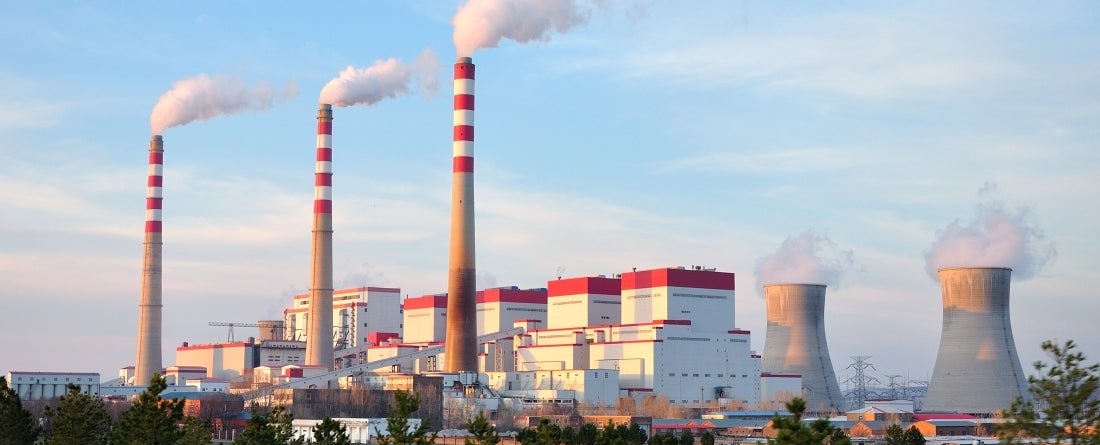
The Center for Global Sustainability at the University of Maryland and the University of California’s California-China Climate Institute Unveil Strategy to Kickstart China’s Coal Phase-down
Targeted Actions Could Reduce China’s Coal-Power Carbon Emissions 20% and Harmful Air Pollutants up to 41% by 2030
Days after the Intergovernmental Panel on Climate Change (IPCC) released its most urgent warning yet about the impacts of human-induced climate change, the California-China Climate Institute (CCCI) at UC Berkeley and the Center for Global Sustainability (CGS) at the University of Maryland today released a groundbreaking new report – “A Decade of Action: A Strategic Approach for a Coal Phase-Down in China” – that details how China can strategically, responsibly and rapidly phase-down coal-power generation over the next decade.
“When it comes to breaking our dependency on coal, all eyes are on China,” said former California Governor Jerry Brown, Chair of the California China Climate Institute. “If leaders in China follow this straightforward strategy, they can show the world that it’s still possible to avert climate catastrophe.”
“In the recent U.S.-China Joint Glasgow Declaration, China sent a positive signal to the world in pledging with the United States to enhance climate action over the next decade,” said Nathan Hultman, Director of the Center for Global Sustainability. “A core action is to accelerate the work of phasing-down coal consumption during China’s 15th Five Year Plan. And this analysis offers China a real opportunity to deliver on this promise.”
There is broad scientific consensus that to prevent catastrophic warming in line with the goals of the Paris Agreement, the world must rapidly transition from coal – the most carbon-intensive fossil fuel – to renewable sources of energy. As the top coal-fired power-generating country in the world by far, China will play a pivotal role in determining the success of this shift.
Accordingly, this report identifies approximately 1,000 poorly performing, old, small, redundant or otherwise undesirable coal-fired plants, referred to as “low-hanging fruit plants,” for rapid retirement across China. These plants account for nearly 20% of China’s existing coal power capacity – or just over 200 GW. By combining these retirements with the cancellation of new projects at early development stages, China can decrease its total coal power capacity to 981 GW by 2030.
“Key to our analysis is the roadmap that we’ve laid out for China to structure its coal phase-down with targeted retirements of the low-hanging fruit plants,” said Prof. Ryna Cui, the report’s lead author and co-director of the Center for Global Sustainability China Program. “We focus on identifying plants that can be retired generating larger environmental, economic, and social benefits, to maximize China’s societal gains from achieving its coal phase-down commitment.”
Notably, by following this phase-down plan, China can reduce nitrogen oxide (NOx) by 29.3%, sulfur dioxide (SO2) by 36.6% and fine particulate matter (PM2.5) by 41.2% compared to 2020 levels – and drastically improve air quality and public health. In the face of prolonged and extreme drought in China, this strategy can also save 2.3 billion cubic meters of water annually – or 23% savings from 2020.
By spreading these shutdowns out over time and space, and ensuring China’s remaining coal plants are evenly distributed geographically, this report finds that the potential economic costs and risks of this strategy can be managed. In fact, based on this analysis, only 5.7% of assets would be lost and while 33% of existing power plant workers could lose employment, these workers – primarily medium- and high-skilled – would be well-positioned with the necessary transferable skills to work in the growing renewable energy sector.
To learn more, tune into the webinar hosted by CGS and CCCI on March 8, 2022 at 5:00 p.m. (Pacific Time); March 9 at 9:00 a.m. (Beijing Time).
Access additional findings & policy opportunities:
- Download the report
- Download the Summary for Policymakers
- Download the policy brief
- Download the supplementary information
------
About the Center for Global Sustainability
Through world-leading research and policy engagement, the Center for Global Sustainability at the University of Maryland seeks to change the way that governments, businesses, and people see possibilities for ambitious climate action. Founded in 2016 in response to the need for thought leadership, analysis, and engagement to support the achievement of global climate goals, its programs advance understanding to support ambitious national and subnational climate strategies, fossil phase-out, energy innovation, finance, and other priorities in the United States, China, Indonesia, India, Brazil, and other major economies. The CGS China Program catalyzes collaborative research with U.S., Chinese, and international teams across the areas of rapid coal phase-down, integrated economy-wide modeling and assessment including provincial detail, renewable deployment, overseas investments, methane action, and more. CGS currently supports about 30 researchers, and also works with a rich community of collaborators around the world. CGS is housed within the University of Maryland School of Public Policy.
About the California-China Climate Institute
The University of California-wide California-China Climate Institute (CCCI) was launched in September 2019 and is housed jointly at UC Berkeley’s School of Law – through its Center for Law, Energy & the Environment – and the Rausser College of Natural Resources. The Institute works in partnership with the Institute of Climate Change and Sustainable Development at Tsinghua – one of China’s preeminent research institutions – as well with other University of California campuses, departments and leaders. Through joint research, training and dialogue, this Institute aims to inform policymakers, foster cooperation and partnership and drive climate solutions at all levels.



